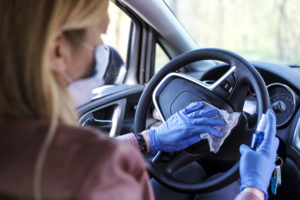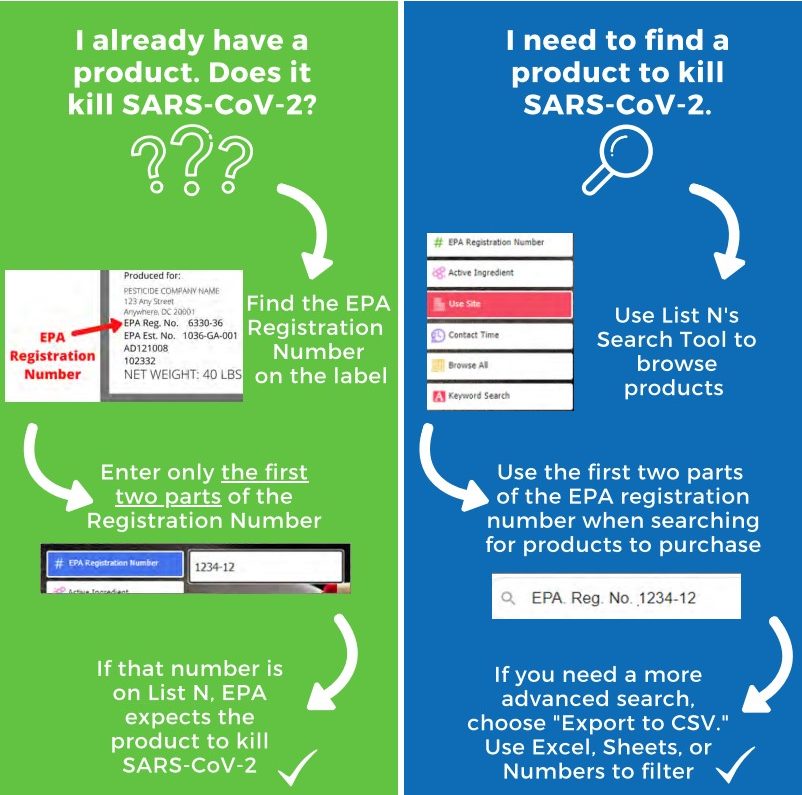
Steps to take against COVID-19 & to ensure disinfectants are effective
By onBusiness Practices | Collision Repair
Nearly two years into the COVID-19 pandemic, repairers are likely well aware that steps need to be taken to prevent the spread of the virus, but as new variants arise and spur questions from consumers about protocols Repairer Driven News looked into what the best steps are and which disinfectants are effective according to the Centers for Disease Control and Prevention and the Environmental Protection Agency.
Repairers should consider wearing PPE, like an N95 mask and gloves while working on vehicles, and can get creative on how to cover surfaces to avoid touching them such as putting a dry cleaner bag over a seat back and another barrier on the rest of the seat. While the CDC says the risk of COVID-19 infection is low from touching surfaces, it still recommends regular handwashing with soap and water or using alcohol-based hand sanitizer as precautionary measures. Regular cleaning and application of disinfectant to surfaces can also reduce the risk of virus spread, according to the CDC.
The CDC recommends putting a wipeable cover on electronics, such as tablets or kiosks, to make cleaning and disinfecting easier. Spraying cleaning products or disinfectants in outdoor areas isn’t necessary, effective, or recommended, but outdoor high-touch surfaces made of plastic or metal should be cleaned regularly.
The EPA notes that fogging, fumigating, and wide-area or electrostatic spraying should only be done if the product label includes directions for the application methods. The agency says it can’t verify if or when it’s appropriate to use UV lights or ozone generators to disinfect.
Nearly 600 disinfectants are on the EPA’s N-list, which the agency says will kill all strains and variants of COVID-19 when they’re used according to the label directions. The list includes several Lysol, Clorox, and bleach products in both wipes, sprays, and dilutable concentrates or solutions. When using the N-list the first two parts of the EPA registration number, not the product name, should be used to identify products. Repairers should make sure the products used are safe for the vehicle surfaces. The EPA includes on the list how long a surface must stay visibly wet with disinfectant to be effective against COVID-19.
Regardless of which disinfectants are used repairers should avoid telling customers their cars have been disinfected as it may not be full-proof since many are 99.9% effective and could leave virus particles behind. Instead, let customers know a disinfectant was used.
Those who haven’t done so already should develop policies to protect and train workers before assigning cleaning and disinfecting tasks.
It’s important to remember that COVID-19 is an airborne virus so care should be taken to avoid blowing it into the air during vacuuming or using other tools that emit air. Using a vacuum with a HEPA filter and bags is best, according to the CDC. In-room, window-mounted, or on-wall recirculation HVAC systems should be turned off while vacuuming to avoid contaminating them. Central HVAC systems should be left on.
When cleaning the shop, if no one has tested positive or is suspected of having the virus the CDC says cleaning surfaces once a day is usually enough. More frequent cleaning may be necessary for high-traffic areas or those with a large number of people, poorly ventilated spaces, where there isn’t handwashing or hand sanitizer access or is occupied by people at increased risk for severe illness from COVID-19.
Another precaution repairers can take is to shower and wash their clothes at the end of every shift. The CDC recommends using the warmest appropriate water setting and to dry items completely.
IMAGES
Featured image credit: Sladic/iStock
EPA N-list use guide (Provided by EPA)

